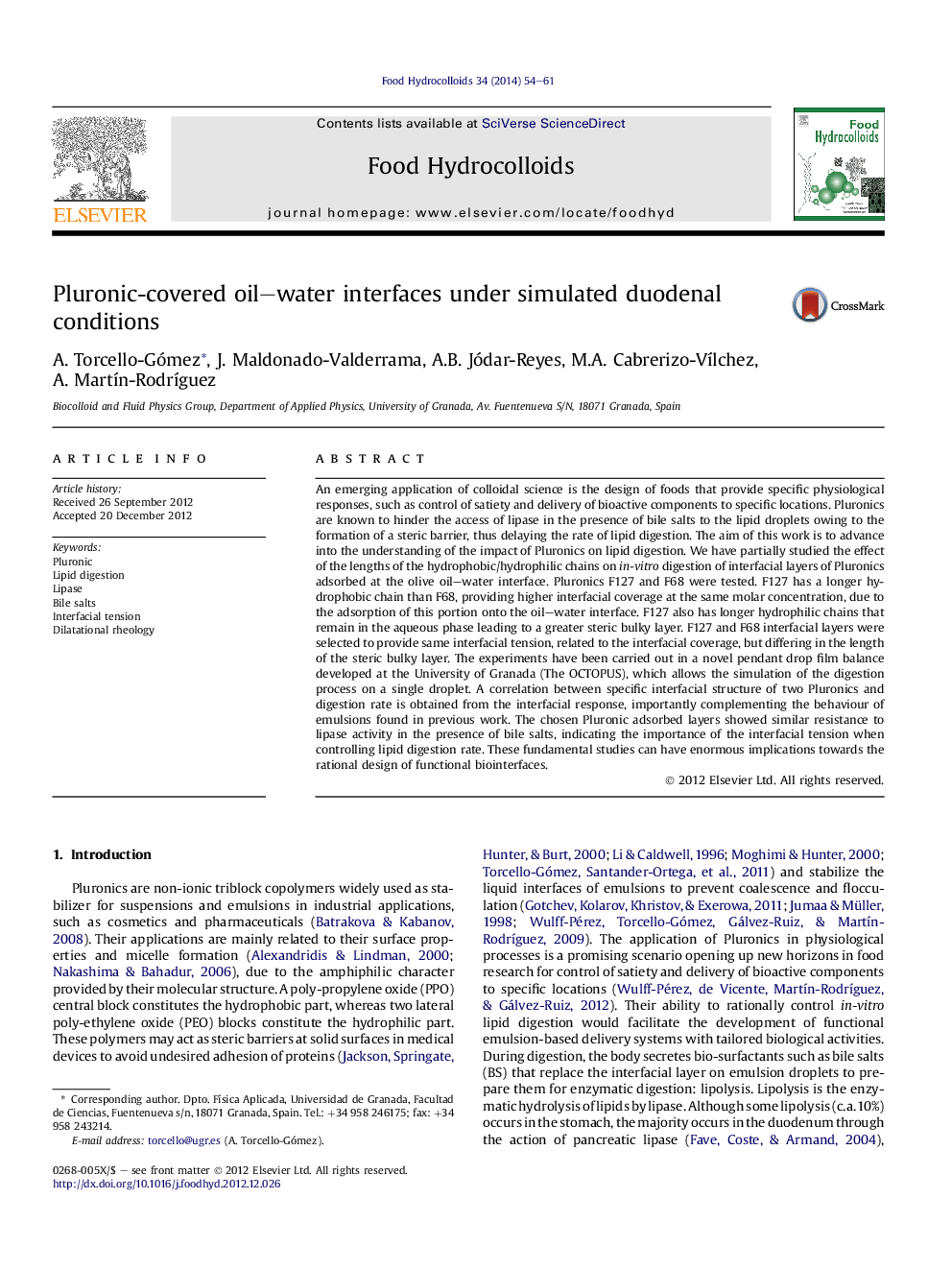| کد مقاله | کد نشریه | سال انتشار | مقاله انگلیسی | نسخه تمام متن |
|---|---|---|---|---|
| 603936 | 1454441 | 2014 | 8 صفحه PDF | دانلود رایگان |

An emerging application of colloidal science is the design of foods that provide specific physiological responses, such as control of satiety and delivery of bioactive components to specific locations. Pluronics are known to hinder the access of lipase in the presence of bile salts to the lipid droplets owing to the formation of a steric barrier, thus delaying the rate of lipid digestion. The aim of this work is to advance into the understanding of the impact of Pluronics on lipid digestion. We have partially studied the effect of the lengths of the hydrophobic/hydrophilic chains on in-vitro digestion of interfacial layers of Pluronics adsorbed at the olive oil–water interface. Pluronics F127 and F68 were tested. F127 has a longer hydrophobic chain than F68, providing higher interfacial coverage at the same molar concentration, due to the adsorption of this portion onto the oil–water interface. F127 also has longer hydrophilic chains that remain in the aqueous phase leading to a greater steric bulky layer. F127 and F68 interfacial layers were selected to provide same interfacial tension, related to the interfacial coverage, but differing in the length of the steric bulky layer. The experiments have been carried out in a novel pendant drop film balance developed at the University of Granada (The OCTOPUS), which allows the simulation of the digestion process on a single droplet. A correlation between specific interfacial structure of two Pluronics and digestion rate is obtained from the interfacial response, importantly complementing the behaviour of emulsions found in previous work. The chosen Pluronic adsorbed layers showed similar resistance to lipase activity in the presence of bile salts, indicating the importance of the interfacial tension when controlling lipid digestion rate. These fundamental studies can have enormous implications towards the rational design of functional biointerfaces.
Figure optionsDownload as PowerPoint slideHighlights
► Pluronics are known to delay lipid digestion in oil-in-water emulsions.
► F127 shows faster adsorption and higher interfacial dilatational modulus than F68.
► Similar Pluronic interfacial coverage has similar susceptibility to duodenal conditions.
► Initial interfacial tension of Pluronic is crucial to control lipid digestion rate.
Journal: Food Hydrocolloids - Volume 34, January 2014, Pages 54–61